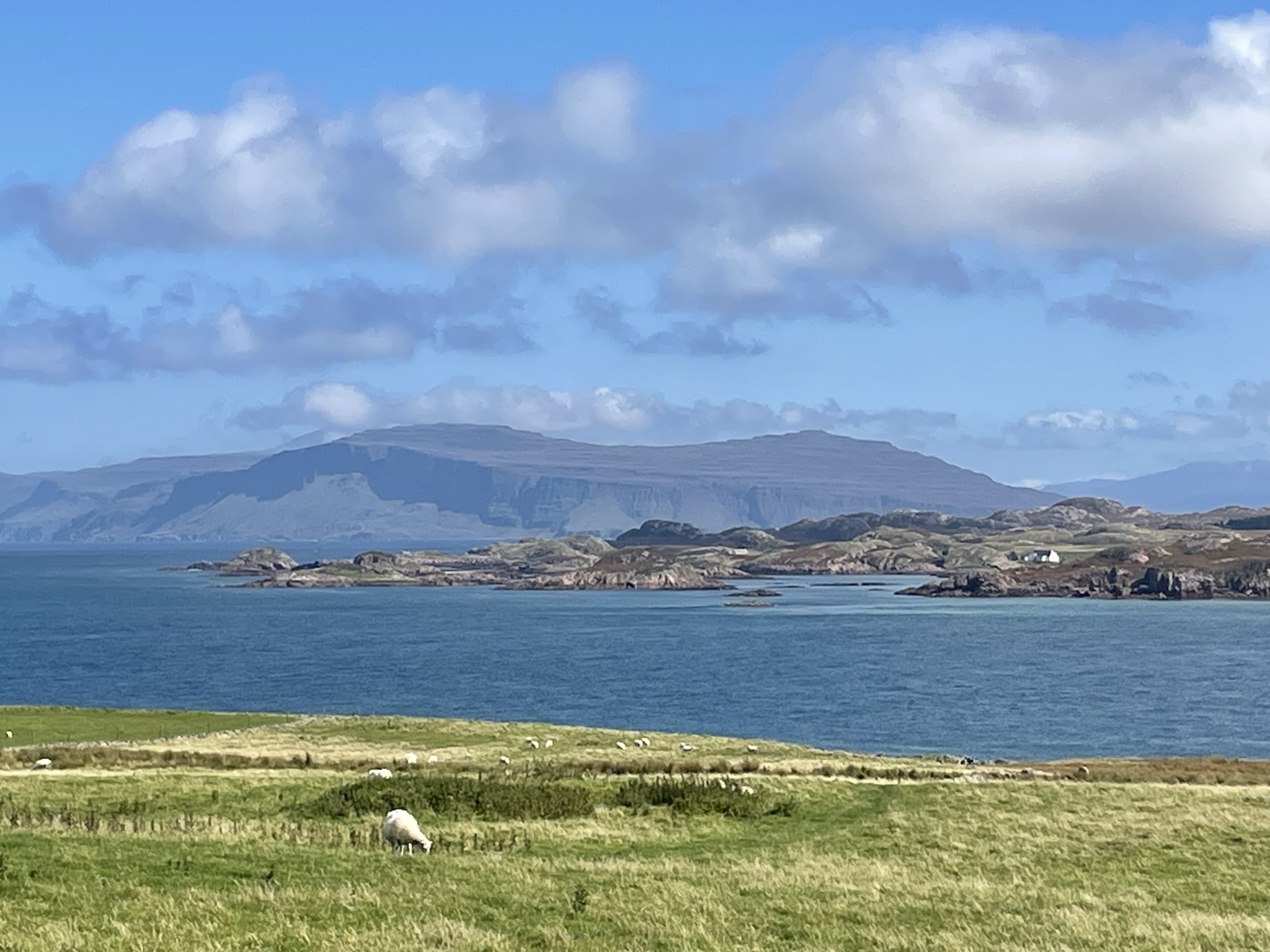Planning a short break to the Isle of Mull, Iona and Staffa? This 3 day itinerary covers the top things to do to enjoy all that the islands have to offer!
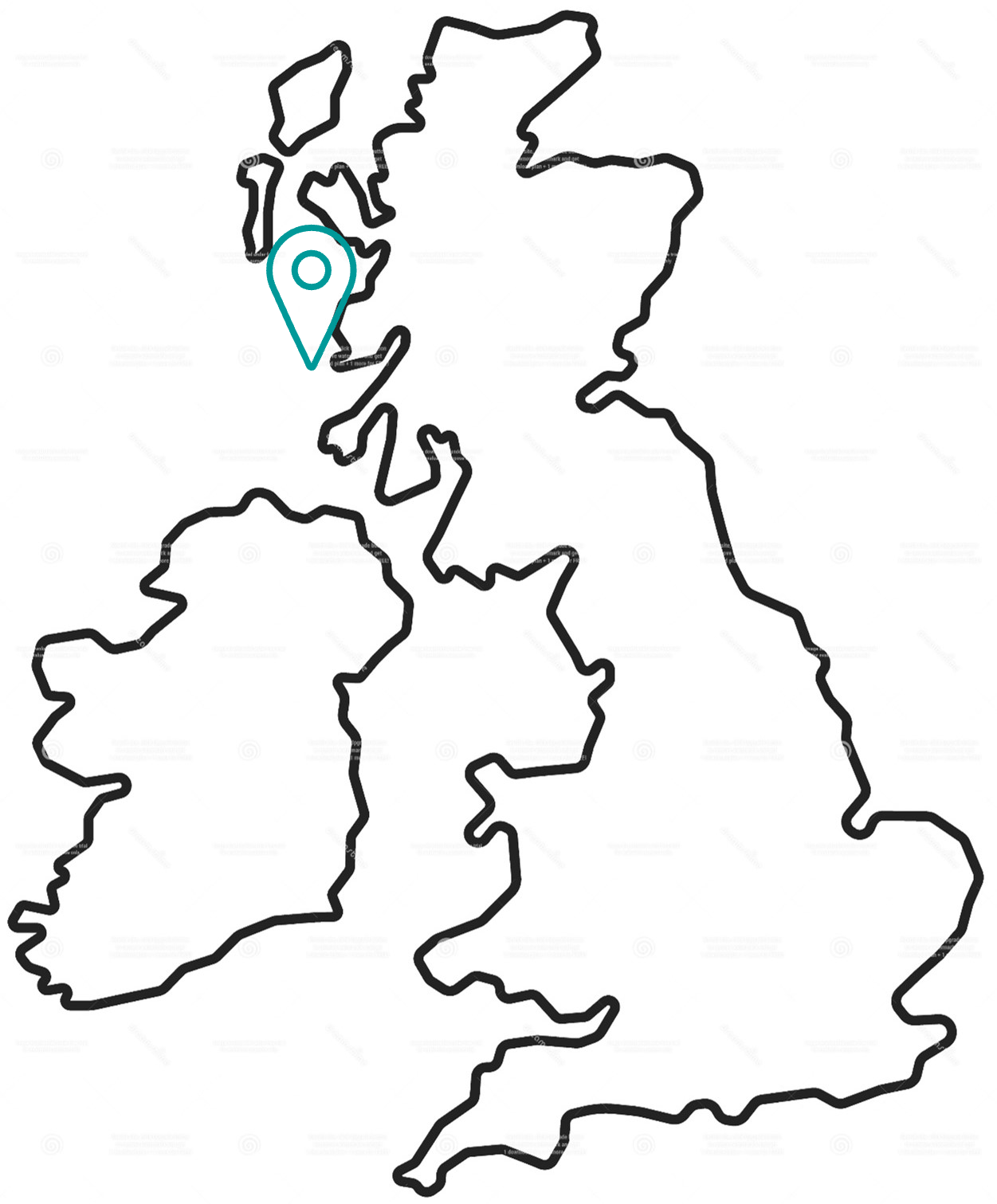
The Isle of Mull is nestled in the Inner Hebrides off Scotland’s west coast and, whilst worth a visit in its own right, is also the jumping off point for two further must-see destinations; Iona and Staffa home to the iconic Fingal’s Cave and busy puffin colonies. With their dramatic landscapes, diverse wildlife, and rich history, these islands make for an unforgettable 3 day itinerary. Mull is one of Scotland’s most accessible islands being just a 45 minute ferry ride from the mainland yet feels worlds away. Mull is well known for its abundant wildlife and wildlife enthusiasts will delight in spotting white-tailed eagles, golden eagles, red deer, otters, puffins, seals, dolphins and whales. Hikers can enjoy breathtaking trails that showcase Mull’s unspoiled beauty. There are beaches to die for and plenty of opportunities for swimming, kayaking and SUPs. The bustling harbour town of Tobermory charms visitors with its colourful waterfront, independent shops, and locally sourced seafood.
This 3 day itinerary for a short break to the Isle of Mull, Iona and Staffa will cover:
This post contains affiliate links, at no extra cost to you. I may earn a small commission if you click through and make a purchase.
Why Mull is the perfect destination for trips to Iona, Staffa and wildlife watching
Exploring Mull, Iona and Staffa is made easy by the regular, short, ferry crossing from Oban. It is also very well set up for visitors whilst retaining its unique island character. The roads, whilst narrow, are easily navigable and there are excellent boat trips to Iona and Staffa, and wildlife watching trips to see puffins, otters, eagles and more.
If short on time it is possible to do a day trip to Mull from Oban.
This 3 day self-drive itinerary below enables you to take more time, go on an inland wildlife watching tour and spend quality time in Tobermory.
The best time to visit Mull, Iona and Staffa is in the late Spring, Summer and early Autumn when the days are long and weather is good although if you want to see puffins on Staffa the peak season for puffin sightings is May to mid-July.
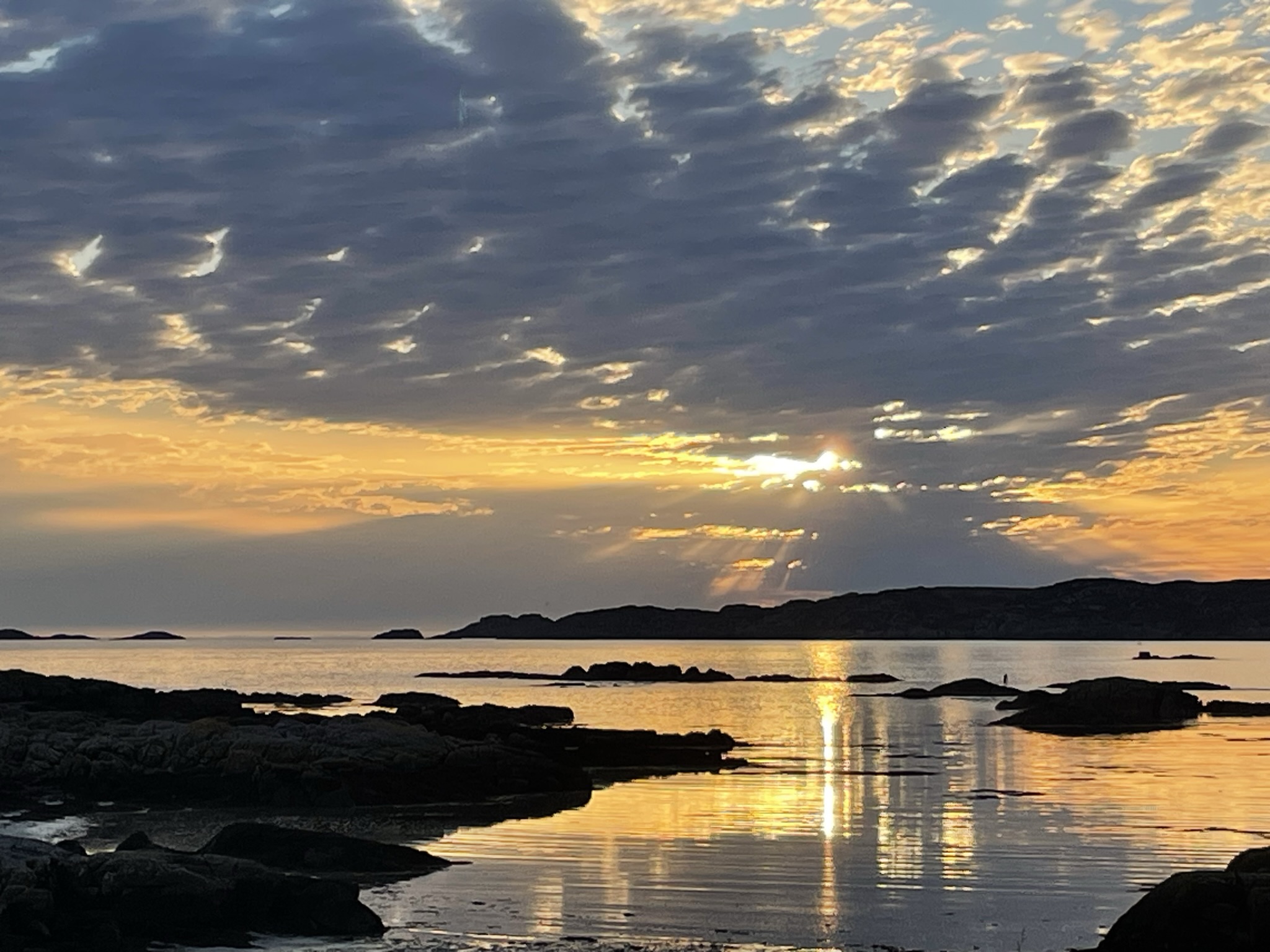
How to get to Mull
There are three ferry routes to Mull operated by Calmac ferries but by far the most convenient is the 45 min route from Oban to the Mull town of Craignure. This route is very popular and so will need booking in advance, particularly if you plan to take your car. Craignure is about 30 mins from Tobermory which is the main settlement on Mull.
Whilst there are regular bus services on Mull, having a car will give you much more flexibility both in terms of where you go but also how often you can stop to take in the views or spot wildlife.
Where to stay on Mull
Tobermory has the best selection of places to stay including hotels, guest houses and BnBs. There are plenty of small guest houses dotted across Mull but Tobermory is perfect for access to places to eat and transport if needed as well as being pretty as a picture with its iconic coloured harbourside houses.
If I were staying in Tobermory again I would choose one of the following hotels:
3 day Isle of Mull, Iona and Staffa itinerary
This 3 day self drive itinerary will enable you to take time to stop and absorb the scenery and culture, go on an inland wildlife watching tour and spend quality time in Tobermory. However, if you prefer to join a group tour or organised event then check out these options that come highly recommended:
Day 1: Take a boat to Iona and Staffa
The village of Fionnphort (pronounced Finnifoot) is the best jumping off point for trips to Iona and Staffa. The journey to Fionnphort from Tobermory is about 1.5 hours by car or 2.5 hours by bus through spectacular scenery. There is very little to this tiny village that ebbs and flows its activity around the Calmac ferry to Iona and the boat trips to Staffa.
It’s definitely worth a stop at The Creel Seafood Bar, a small seafood hut on Fionnphort quay which serves takeaway lobster, mussels or traditional fish and chips. You can find a space on their benches to eat or takeaway to find a spot on the shore.
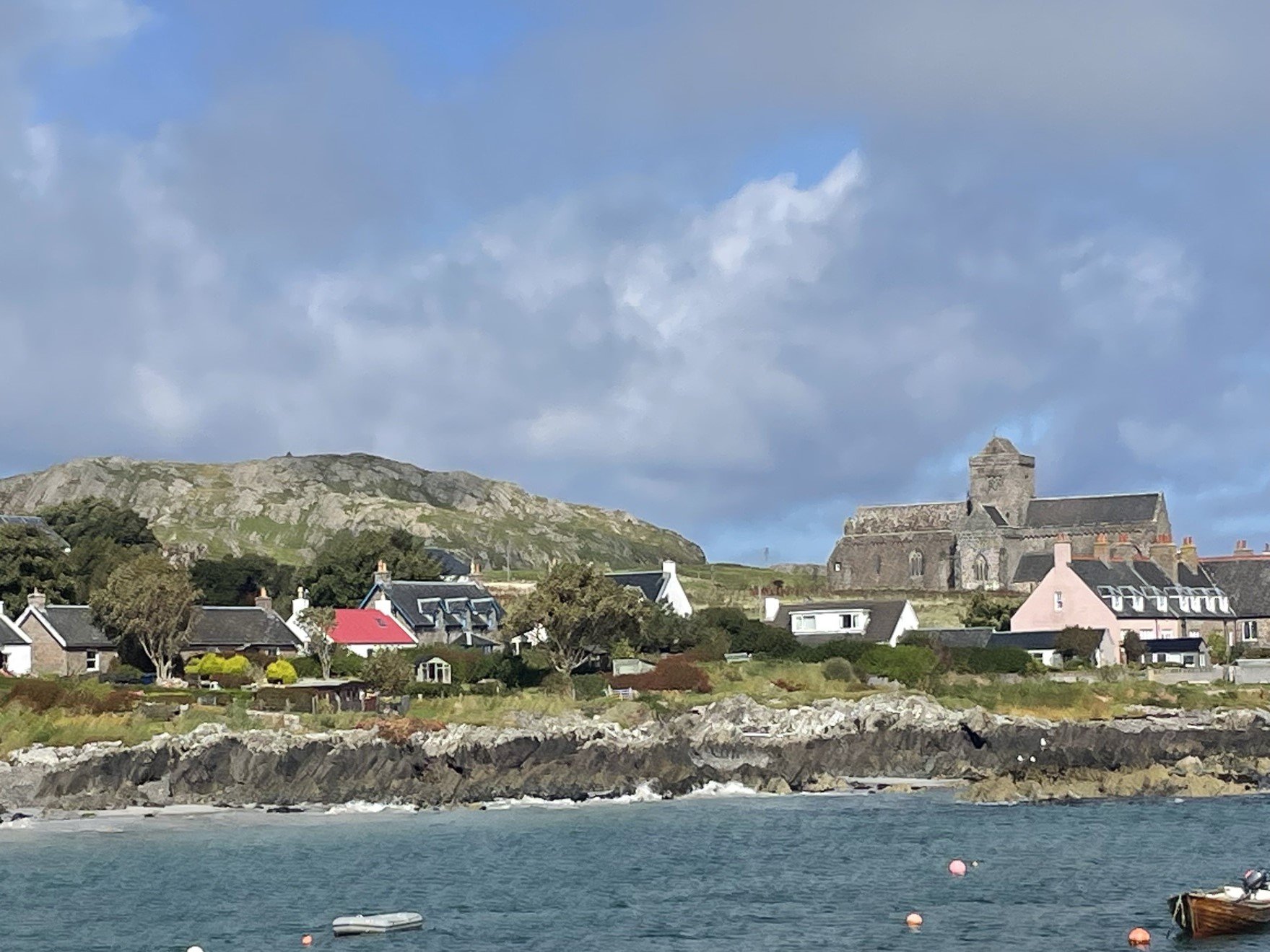
Iona is a small, 3 mile long, island of about 150 residents with a deep history.
It holds special significance for Christianity as it was the place from which Columba started spreading the Christian gospel in AD 563. It is still a pilgrimage site for a lot of Christians and it is possible to visit the Iona Abbey and the ruins of the Nunnery.
You can’t take cars onto Iona so once there you will need to explore on foot. Given the size of the island this is relatively easy. There are beautiful beaches at the north and south ends of the island and it’s also a relatively easy climb to Iona’s highest point Dun I. Although Dun I sits only about 100 m above sea level the views are stunning across the length and breadth of Iona and across to Mull.
Around the quay there are small, independent, craft shops and small visitor centre. Two hotel restaurants open for food and drink to non-residents but can get quite busy. However, if you’re prepared there are plenty of place for a picnic.
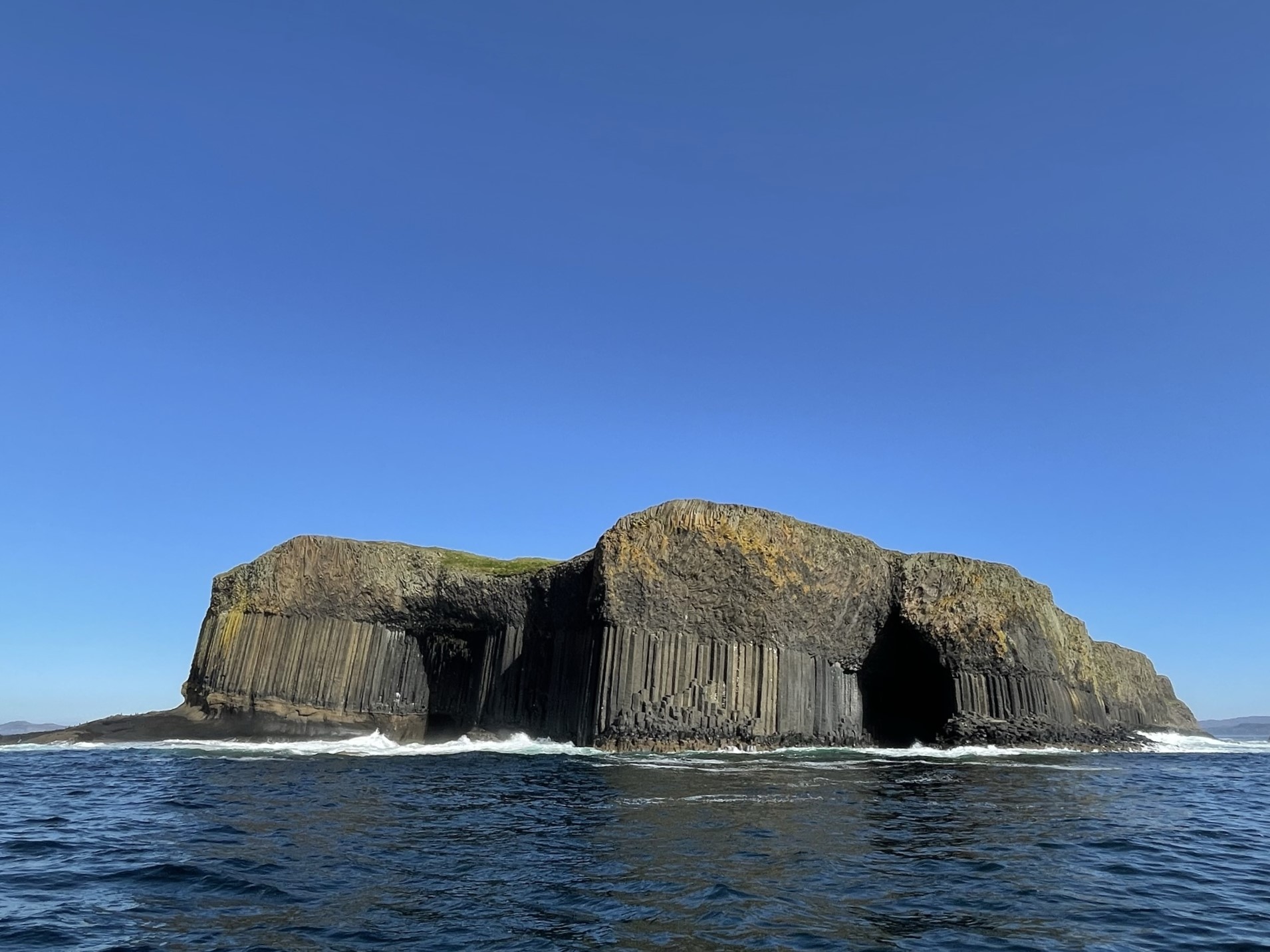
Staffa is a geological marvel, instantly recognisable from its huge basalt columns formed by ancient volcanic eruptions.
It is famous for Fingal’s cave which is a cavernous, cathedral-like cave formed from the columns which has inspired poets and composers for centuries. If the sea conditions allow boats will land on Staffa and you can make your way along a narrow path into Fingal’s cave and experience the roar of the waves first hand. The cave is named after the mythical giant Finn McCool who came to Scotland from Ireland.
The other big draw for Staffa is its large Puffin colony which breeds on Staffa between May and August. Although boats are not always able to land, if you are lucky enough to be able to, you can walk up to the cushiony green top of the island and see the puffins up close as they return to their burrows.
The boat trip is a treat in itself with a knowledgeable commentary from the crew. The round trip is about 2-3 hours which can include about an hour ashore if conditions allow. We were blessed with amazing weather although there was a considerable Atlantic swell. Our captain took us to various coves to see seals hauled out on the rocks and 2 or 3 separate pods of dolphins joined us on our trip, swimming right next to the boat, as close as I’ve ever seen them.
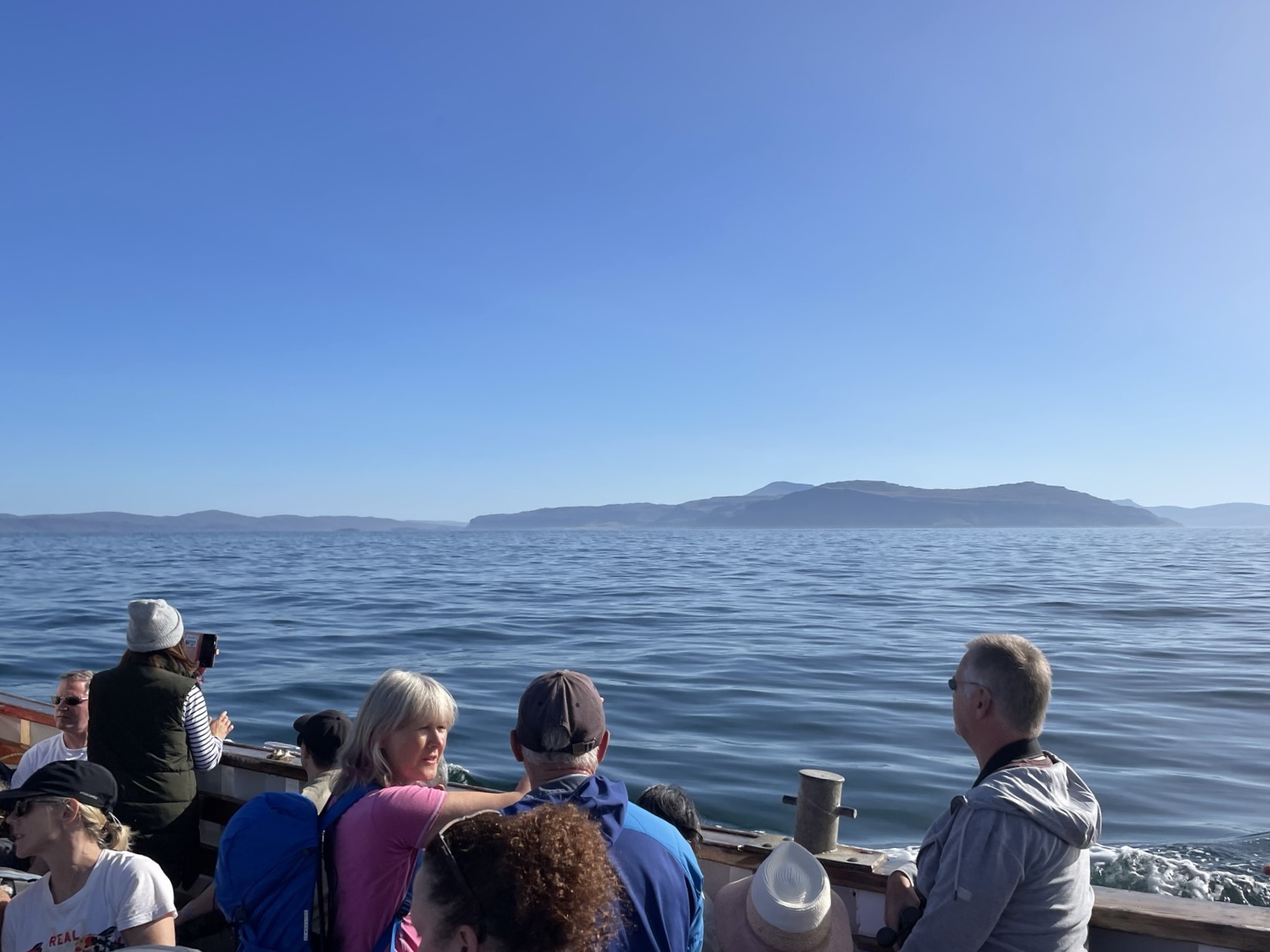
Boat Trips to Iona and Staffa
Trips to Staffa from Fionnphort are run by a number of operators namely Staffa Trips (which we used) and Staffa Tours (who also run a trip to Staffa from Tobermory but it’s not possible to get to Iona from there). It’s important to book in advance.
The small ferry to Iona is operated from Fionnphort by Calmac ferries. It’s possible to book in advance online or use the small booking office on the quay at Fionnphort.
Boats taking visitors to Staffa will often include a stop on Iona where you can alight and then get the Calmac ferry back if you want to combine a trip to Iona on the same day. Or you can travel from Fionnphort to Iona separately on the Calmac ferry another time.
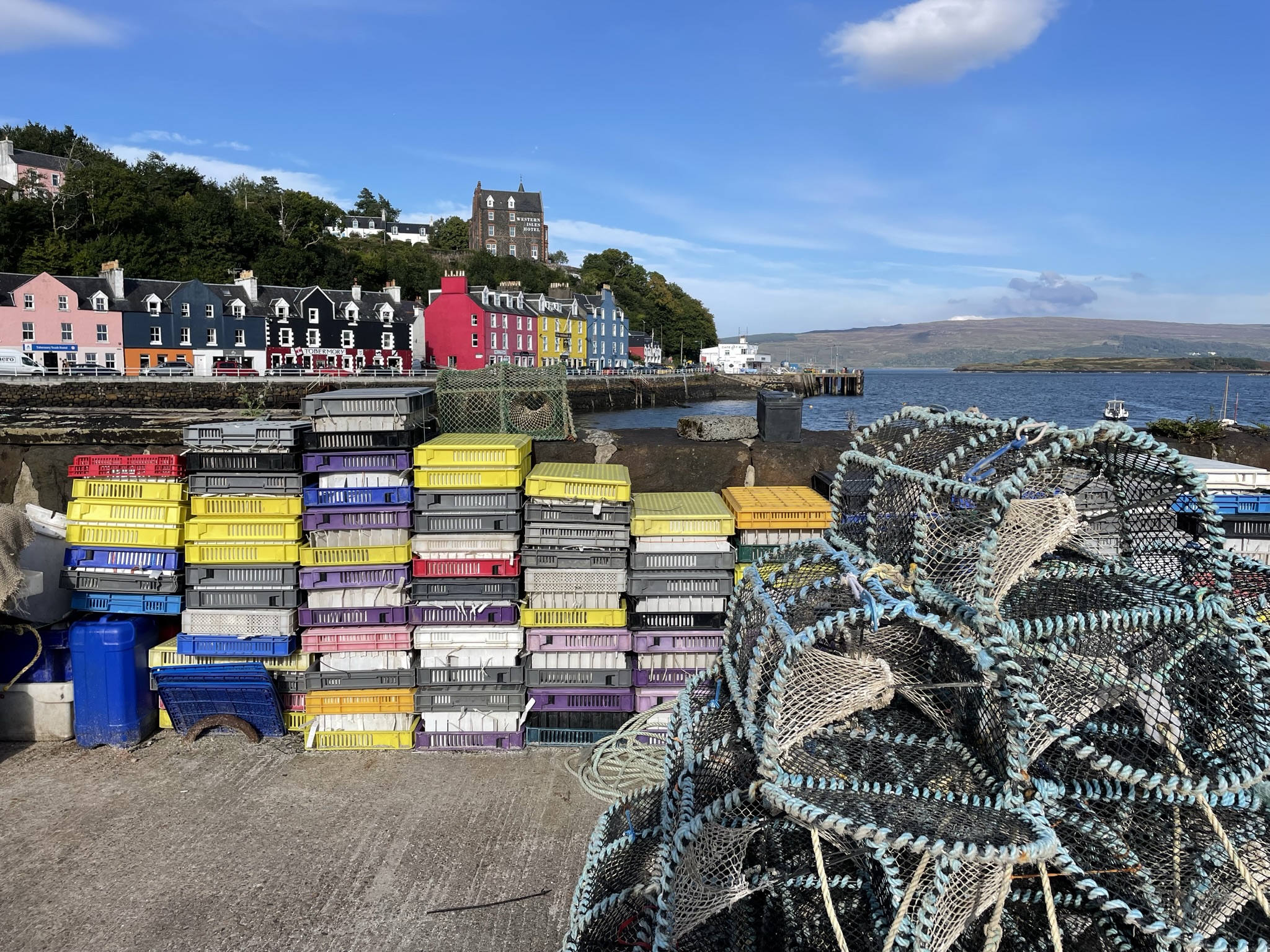
Day 2: Explore Tobermory
Tobermory is the closest you will get to a town on Mull and is most famous for its colourful waterfront buildings. It can be a relatively buzzy place being the epicentre of Mull for accommodation and the starting point for many tours. It has plenty of places to eat and drink, a small museum and a nearby 9 hole golf course. In order to explore Tobermory fully why not:
- Browse the many independent shops including a bookstore, pottery, bakery, art gallery, chocolatier, chandlers, the Isle of Mull Soap Company, and shops that sell outdoor clothing.
- Visit Isle of Mull Cheese to pick up a tour of their innovative and forward thinking dairy and distillery (yes, distillery!) which uses the whey from the cheese making process to produce a range of vodka, gin and whisky. The farm, dairy and distillery are powered by renewable energy and the cheese is produced entirely from milk from their cows. They have a gorgeous café and small farm shop and it’s worth visiting just for this alone if you don’t have time for a tour. Tours of the dairy and distillery are best booked in advance.
- Take a tour of the Tobermory Distillery which has been producing spirits on the Isle of Mull since 1798. Set close to the harbour, they run production tours and tastings of their whisky and gin.
- Hire a bike and explore Mull at a slower pace with Cycle Mull. There are mountain bikes and electric bikes on offer and Cycle Mull can give advice on suitable routes. There is plenty of wilderness within easy biking distance of Tobermory. It’s best to book in advance.
- Take a boat trip around Tobermory Bay or a Gin and Whisky tasting with Tobermory Bay Tours. These are short 1-1.5hr tours in sheltered water where you can get to see colourful Tobermory from a different perspective. You can also take longer trips to Staffa and the Treshnish Isles from Tobermory with Staffa Tours.
- Enjoy Hebridean hospitality at the famous Mishnish Pub. The Mishnish stands in the centre of the brightly coloured buildings on the harbour front and has been welcoming visitors since 1869. It’s a traditional, cosy and iconic Scottish bar with live music in the evenings. Food is available in the bar and restaurant.
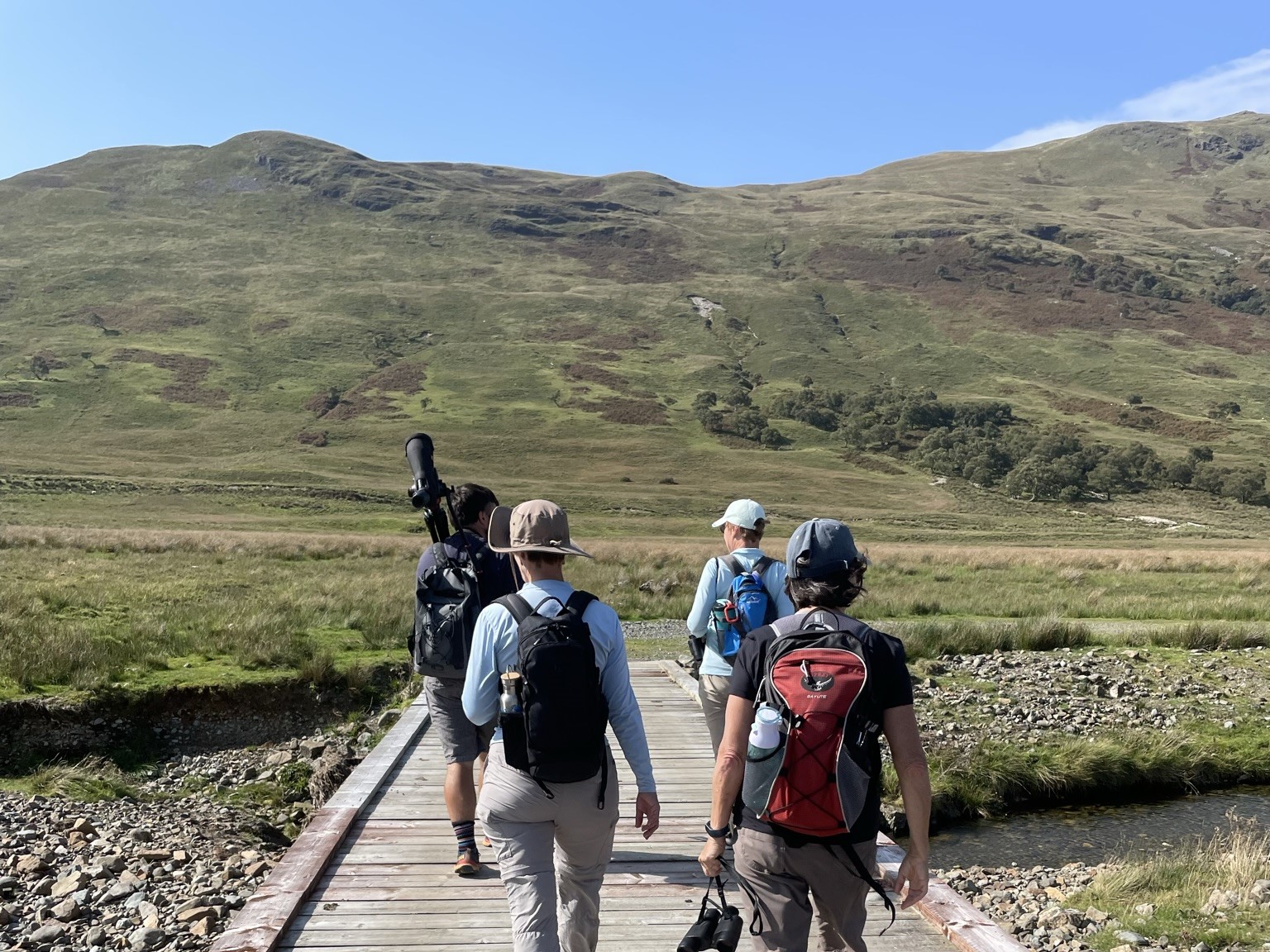
Day 3: Mull’s wonderful wildlife
One of the biggest draws to Mull is the abundant and diverse wildlife. Nature Scotland specialise in wildlife tours which can be tailored according to what you want to see and the amount of walking that you want to do. Their Mull Nature Explorer is primarily a vehicle based tour whilst their Mull Wilderness Explorer is a walking tour, though you may be taken by minibus to the start of your walk. The guides are friendly and incredibly knowledgeable and are able to spot wildlife out of seemingly nowhere! On our Mull Wilderness Explorer we saw White-tailed Eagles (the eagle with the longest wing span in the world), Red Deer and, very kindly at my request, orientated the second part of the day to spotting Otters. I can not thank our guide enough as he was persistent in this quest and I saw my first wild otter, feeding quietly just off the seashore. I know I would have been unlikely to spot one on my own. Nature Scotland also run photography workshops where you can hone your wildlife photography.
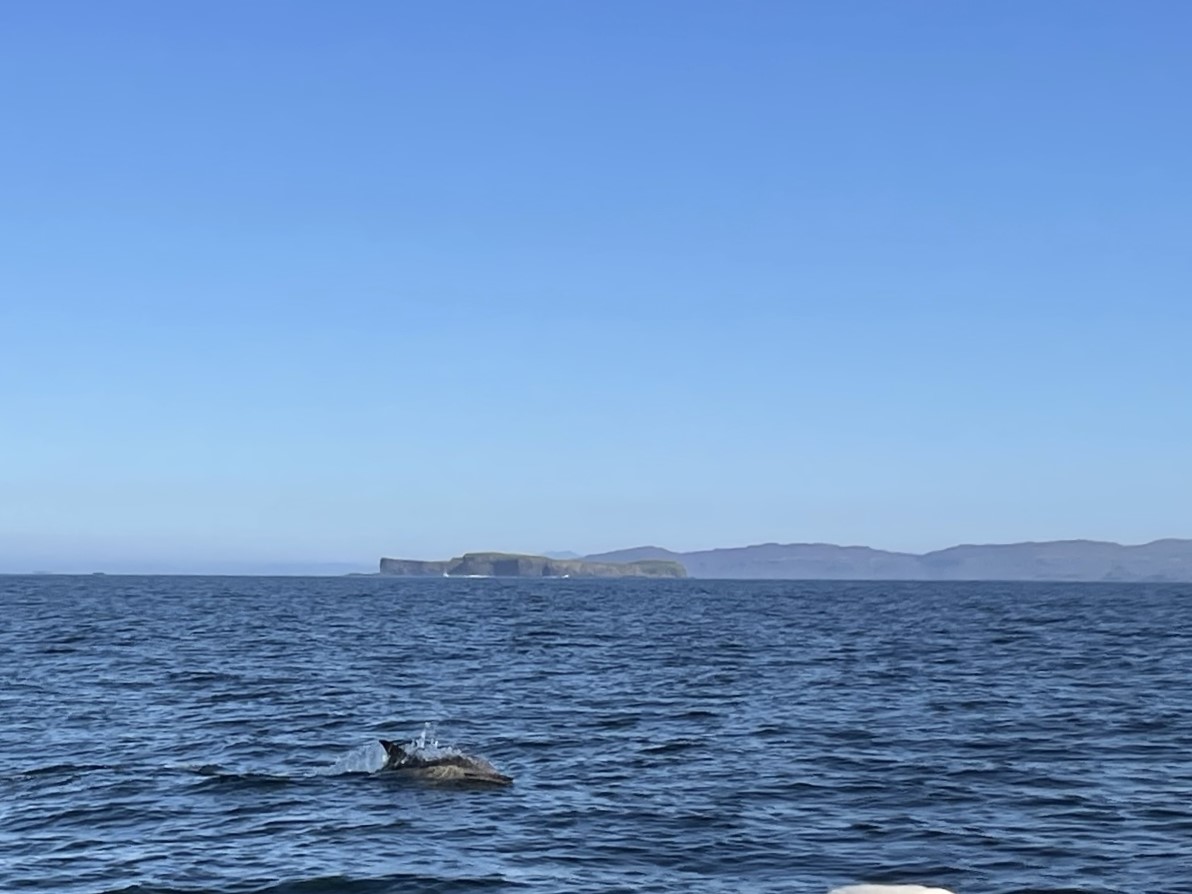
Why not combine a visit to the Isle of Mull with a longer trip to Scotland or Northern Ireland?
After leaving Mull you could drive south to Cairnryan (overnight on the way if needed) and take the ferry across to Belfast and pick up my 5 day Northern Ireland self-drive itinerary: Belfast and the Causeway Coastal Route or consider a day trip to the Giant’s Causeway. The Giant’s Causeway, like Staffa, is formed from hexagonal basalt columns created by ancient volcanic eruptions and the two places are connected in mythology by the giant Finn McCool (after whom Fingal’s cave is named) who is said to have created the Giant’s Causeway to get from Ireland to Scotland.

